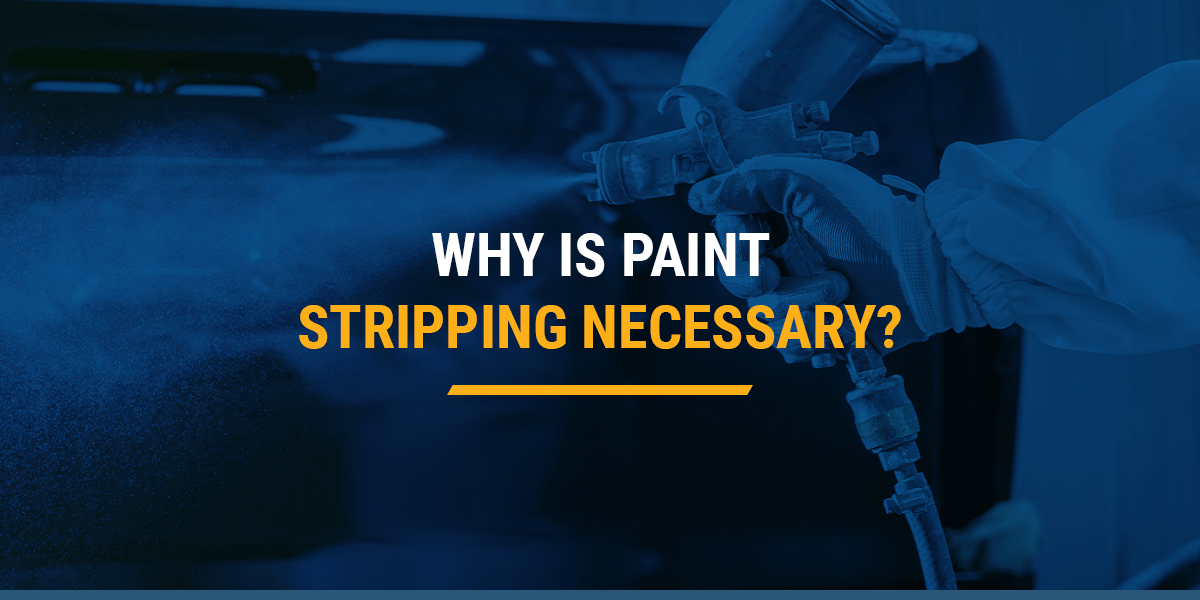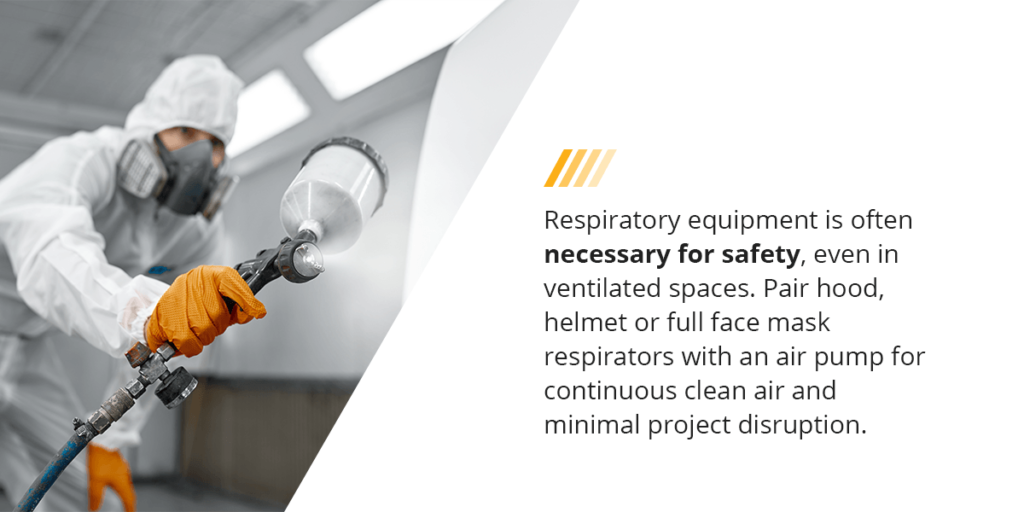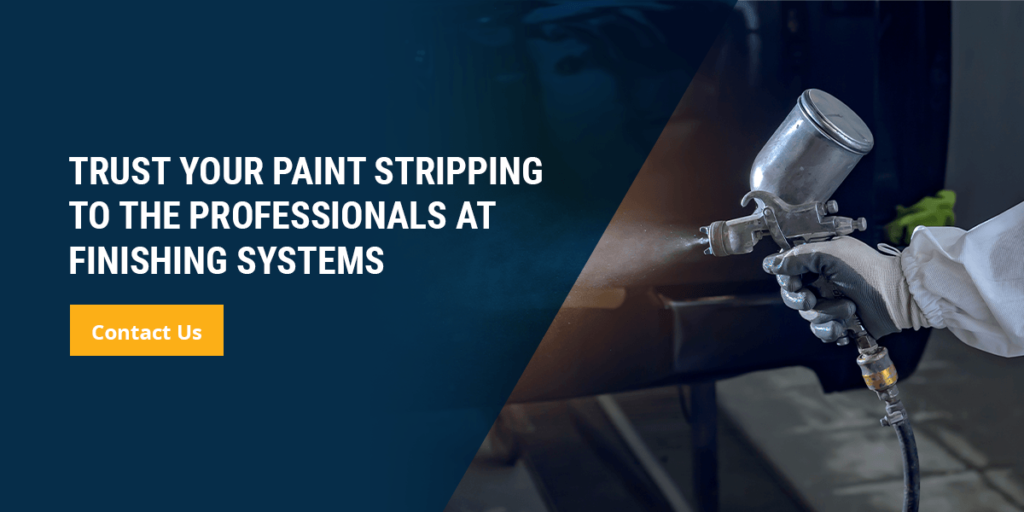Why Is Paint Stripping Necessary?

Why Is Paint Stripping Necessary?
Updated: November 20, 2023When working with metal, wood, or other materials, paint stripping is often a crucial step in the process. Whether you're repainting a building's exterior or repurposing items for a new project, removing old paint helps prepare the surface for a fresh coat and ensures better adhesion and durability.
Contact Us
What Is Paint Stripping?
Paint stripping is the process of using chemicals, heat, abrasives, or other methods to remove paint from a surface without damaging the underlying material. In industrial settings, this process is vital across various sectors like automotive, restoration, and manufacturing. It allows components to be refinished, resurfaced, or reused efficiently. By stripping old paint, businesses can save costs and preserve unique items that might otherwise be discarded.
When to Strip Paint
Do you need to strip paint before repainting? It depends on your specific project. Some people skip this step, but they miss out on the benefits of proper paint removal. Whether you're an individual or a business, there are many situations where paint stripping is necessary to achieve a smooth, even finish and ensure long-lasting results.
Here are some common reasons why paint stripping is required:
- Removing lead-based paint: Lead paint was once widely used, but it's now known to be harmful, especially to children. Removing it is essential for safety and compliance with regulations. In some cases, local laws require professional abatement to ensure safe handling.
- Fixing a poor paint job: If a previous paint job has issues like chipping, uneven color, or layers, stripping and starting over is often the best solution. This gives you a clean slate and improves the final outcome.
- Changing finishes: If you want to switch from one type of finish to another—like from oil-based to water-based—it’s important to remove the old paint first. This prevents inconsistencies and ensures the new finish adheres properly.
- Preparing for precision work: For delicate mechanical parts or machinery, a smooth and uniform surface is critical. Paint stripping helps eliminate imperfections and makes the surface ready for high-quality refinishing.
How to Strip Paint
There are several ways to remove paint, depending on the project and the materials involved. Some methods can be done at home, while others require professional expertise.
1. Choose the Right Method for the Project
Industrial paint stripping can involve solvents that weaken paint adhesion or chemical strippers that break down the paint itself. The right method depends on factors such as the material, paint type, and intended use of the item. Options range from heat guns and wire brushing to more advanced techniques like abrasive blasting.
Professionals may use different stripping agents based on:
- Type of material (metal, wood, etc.)
- Type of paint (oil-based, latex, etc.)
- Thickness and layering of the existing paint
- Available tools and equipment
- Future use of the component
2. Prepare the Work Area
Always work in a well-ventilated space, even if you’re not using chemicals. Cover nearby surfaces with protective sheeting and keep the area clear of people and animals. If using heat, monitor the temperature and adjust as needed to avoid damage or fire hazards.
3. Use Proper Safety Gear
Protect yourself with the right equipment. A face mask may be enough for light dust, but chemical fumes or airborne particles often require full respiratory protection. Other essentials include goggles, gloves, and coveralls to protect your skin and clothing.

Paint Stripping vs. Abrasive Blasting
While paint stripping is effective, it often involves hazardous chemicals that can be dangerous for workers and the environment. It can also be expensive, depending on the scale of the project.
Abrasive blasting is a safer, more cost-effective alternative. Instead of using chemicals, it uses high-pressure streams of media like sand, glass beads, or steel grit to clean and prepare surfaces. This method is efficient, consistent, and environmentally friendly, making it ideal for large-scale or time-sensitive projects.
Some common types of abrasive media include:
- Glass beads
- Sand
- Plastic
- Walnut shells
- Corn cob pieces
- Steel grit
Many of these materials can be reused, reducing waste and lowering costs over time.
Trust Your Paint Stripping to the Professionals at Finishing Systems
Many people think they can save money by stripping paint themselves, but this isn’t always the case—especially when dealing with metals. At Finishing Systems, we offer expert paint stripping services using advanced abrasive blasting technology. Our team ensures fast, efficient, and high-quality results every time.
Whether you choose to do it yourself or outsource the job, we have the right abrasives and equipment to get the job done. Our professionally built blasting systems are also available for sale or rental, making it easy to maintain your own operations.
Explore our website to discover more about the wide range of services we provide. From paint stripping to surface preparation, we’re here to help you achieve the best possible results.
To learn more about our fast and reliable paint stripping solutions, contact us today!

â—† Fine chemicals, ceramics, abrasions and refractorials] Typical materials are: garnet silicon carbide, corundum, cerium oxide, alumina, boron carbide, tungsten carbide, emery, etc.
â—† Food, medicine and health care products] Typical materials are: pollen, hawthorn, pearl powder, stomach medicine, nimodipine, antibiotics, contrast drugs, Ganoderma lucidum, Gallnut, multiflorum multiflorum, etc. :
â—† Magnetic powder, mobile phone electromagnetic powder, photocopying toner and electronic materials Typical materials are: lead battery, nickel-chromium battery, nickel-manganese battery, ferrite, manganese tetroxide, manganese dioxide, lithium cobalt, lithium manganate, carbon, etc.
â—† Non-metallic ore and powder metallurgy] Typical materials are: quartz, barite, kaolinite, high calcium, talc, mica, graphite, wollastonite, etc.
â—† Reflective materials, pigments, dyes and powder coatings] Typical materials are: iron oxide, titanium dioxide, glass beads, etc. :
â—† Pesticide, feed and biological materials
classifier,air classifier,lab classifier,single or mutiple rotors
Shandong Jing Xin Powder Equipment Technology Co., Ltd. , https://www.jxpowder.com